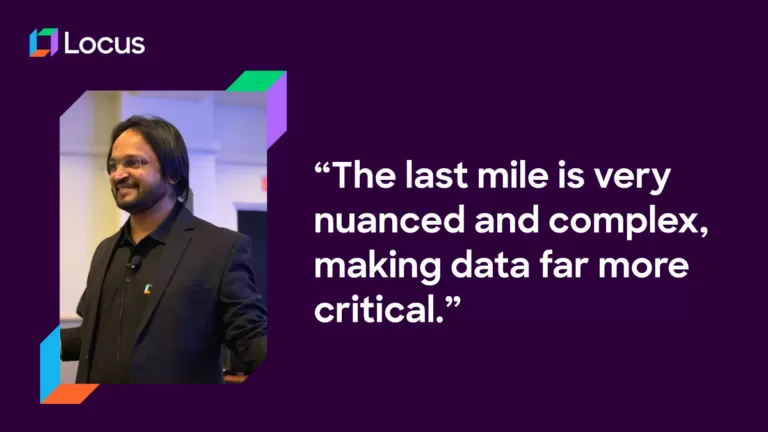Last Mile Delivery Optimization, Route Optimization
Sequence Adherence and Why it Matters for Last-Mile Excellence
Jun 17, 2022
6 mins read

If you’re reading this, chances are that you’re already optimizing and automating key aspects of your last-mile dispatch operations with smart routing and rider allocation technology. But there’s a catch. You might often notice that your drivers are not following the routes that have been chalked up by your route planning or route optimization solution.
This is such a persistent problem in the industry that the study of this phenomenon has its own term: Sequence adherence.
So why is this happening?
The map is not the territory
Essentially, a route optimization engine creates routes that factor in multiple real-life constraints—distance/time between pickups/drop-offs, load types, route profitability, etc. While much progress has been made in increasing their depth, they are still far away from providing the complete picture.
Real-world constraints like geography, on-ground traffic conditions, and driver convenience might get less weightage in route planning. This makes for a world of difference for those making deliveries on the field.
For example, A route optimization engine, which is a core element of Last Mile Delivery Software, may suggest making a delivery near a school in the morning on a weekday. On reaching close to the school, the rider notices that the roads leading to his destination have been packed with school buses and vehicles of parents looking to drop their children off, and decides to make this delivery later in the day.
Knowledge is power
After consistently making deliveries to particular areas, drivers are often well-versed with their ins and outs. They know alternative routes that have less traffic, the best parking spaces, or even which destinations can be conveniently delivered together. It is this knowledge that can provide a crucial edge to route optimization engines, but it is difficult to be captured and utilized, at least currently.
Finding a way to do this effectively can increase the quality of route planning by leaps and bounds, which is why Amazon had recently carried out a Last Mile Routing Research Challenge to tackle this problem.
In fact, Locus has been carrying out its own studies on Sequence Adherence. At its current stage, findings suggest that drivers are less likely to deviate from the optimized routes if the first task is closest to the home base or starting point of the driver. It also suggests that drivers prefer completing tasks in sequence if they are part of the same locality or sector.
What, really?
Route optimization engines work by crunching the numbers while being mindful of the constraints that they have been given. There are some instances when the routes, while optimized to ensure deliveries in the quickest time, might not make intuitive sense to the drivers in terms of delivery stop sequence, distance traveled, and loads assigned.
For example, A route assigned to a driver might suggest to start delivering from the destination furthest away and then work their way backward. Anecdotal evidence from Locus’ research on sequence adherence suggests that this might not be the most preferred way for drivers to carry out their deliveries. They would prefer to build on the momentum of completing nearby tasks before finishing the ones further away.
In the process, drivers then follow their own manually sequenced routes to make deliveries, often leading to less than optimal usage of the platform and its benefits, deviations from planned routes, unplanned delays, more miles traveled, higher route costs, and rising driver dissatisfaction.
Sequence adherence matters, but not without driver satisfaction
Consistently following optimized routes translates into fewer empty miles traveled, optimized fuel usage, and reining in costs. According to a World Economic Forum (WEF) report, effective data-based solutions such as dynamic rerouting can reduce emissions by 30% and delivery costs by 25% by 2030, when compared to a “do nothing” baseline. However, all of these benefits can be attained only if drivers consistently stick to the routes provided.
When drivers do not follow these routes, it is likely because they believe it does not translate to a fair and consistent workload for the day. According to a recent study that surveyed leading parcel and delivery companies in the US, this is one of the top contributing factors to driver satisfaction.
Why is this important? Drivers are often the main point of contact with end consumers. The study also noted that the respondents in the survey largely believed that there is a direct link between driver and customer satisfaction. Inequitable routes add to a growing sense of dissatisfaction that eventually causes tremendous churn among drivers. This leads to a loss in the tribal knowledge accrued by them and increased expenditure on hiring and training new drivers. Alternatively, the drivers that do stick around carry out a routing that suits their needs, but which could hurt customer satisfaction through delays.
Making drivers a part of the process
It is clear that sequence adherence has a steep mandate that must also balance the needs of the drivers. To that end, route optimization engines must:
Incorporate dynamism and tribal knowledge: Route planning solutions with realistic optimization functions must factor in uncertainty and real-life constraints related to time, distances, fleet size, and implicit tribal knowledge taken from on-ground teams. Such routes have a higher probability of being accepted by drivers. It also makes planning dynamic and more likely to withstand disruptions that happen at the moment.
Taking a look at the previous example, now that the driver is aware of the rush during school days, they repeatedly avoid making deliveries in the area in the mornings. This could be a pattern that can be picked up by route optimization engines, and incorporated into future routes that will be more likely followed by drivers.
Allow for constant change in routing models: Optimization is an ongoing process. Companies with static models risk inhibiting growth. Self-learning routing engines incorporate data from each deviation and sequence modification to create routes that are more likely to be accepted by drivers. Continuous learning from each delivery outcome allows companies to use operational data, predict driver behavior, and dynamically adjust gaps between planned and actual routes. This makes routing more robust, efficient, cost-effective, and more likely to make drivers happier.
To know how Locus’ self-learning route planning algorithms can boost your last-mile efficiency
Related Tags:

Last Mile Delivery Optimization
Last Mile has the Potential to Evolve From Cost Center to Revenue Driver: Nishith Rastogi, Founder & CEO, Locus
At the Gartner Supply Chain Symposium/Xpo, Locus Founder and CEO Nishith Rastogi, gave a talk entitled ‘Fueling Growth: Make Last Mile Your Differentiator’.
Read more
Last Mile Delivery Optimization
Last Mile Delivery – A Complete Guide
The last mile delivery is only one part and the last leg of the logistics in the entire supply chain. Know the challenges and solutions of last mile delivery.
Read moreMOST POPULAR
EDITOR’S PICKS
SUBSCRIBE TO OUR NEWSLETTER
Stay up to date with the latest marketing, sales, and service tips and news


Sequence Adherence and Why it Matters for Last-Mile Excellence